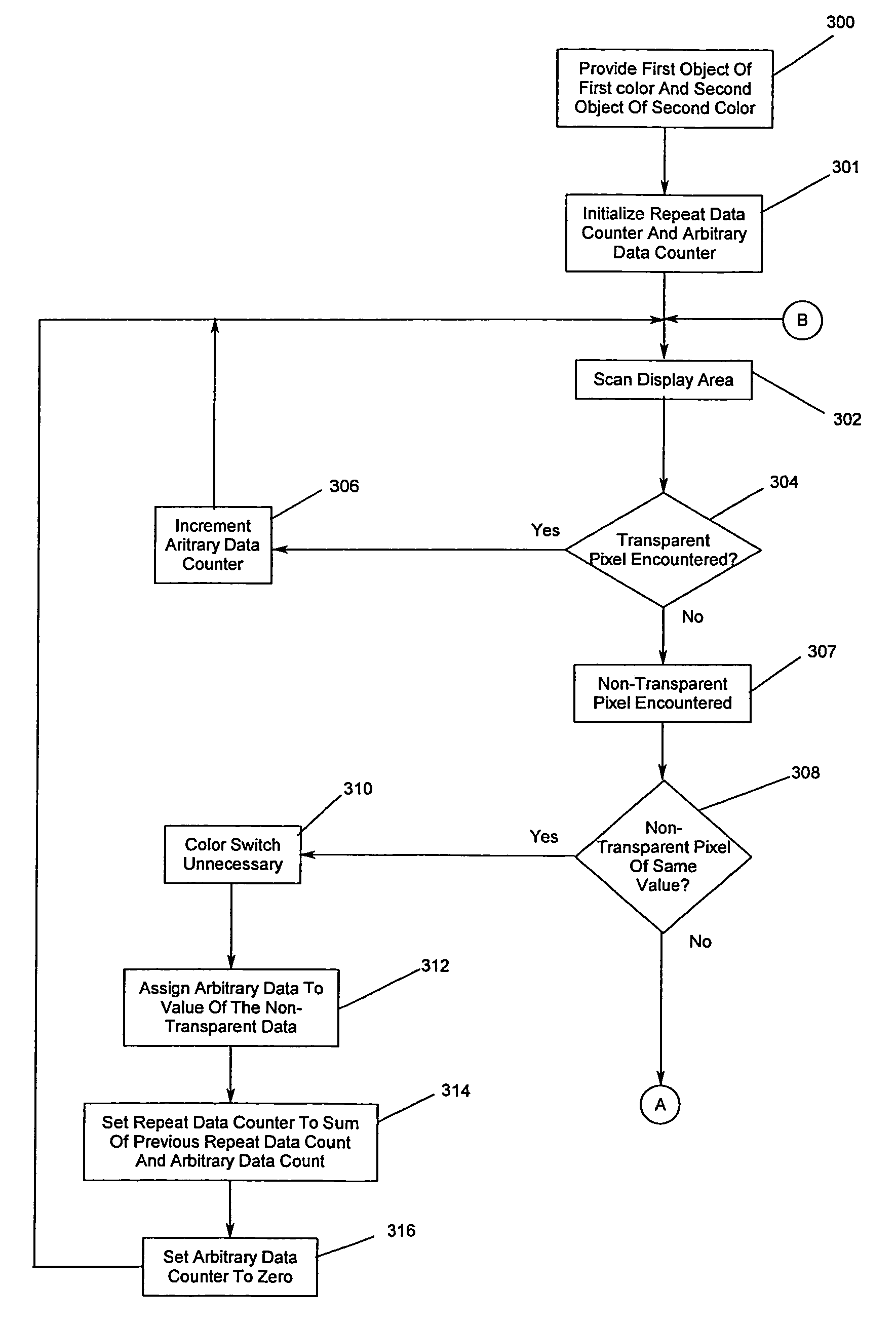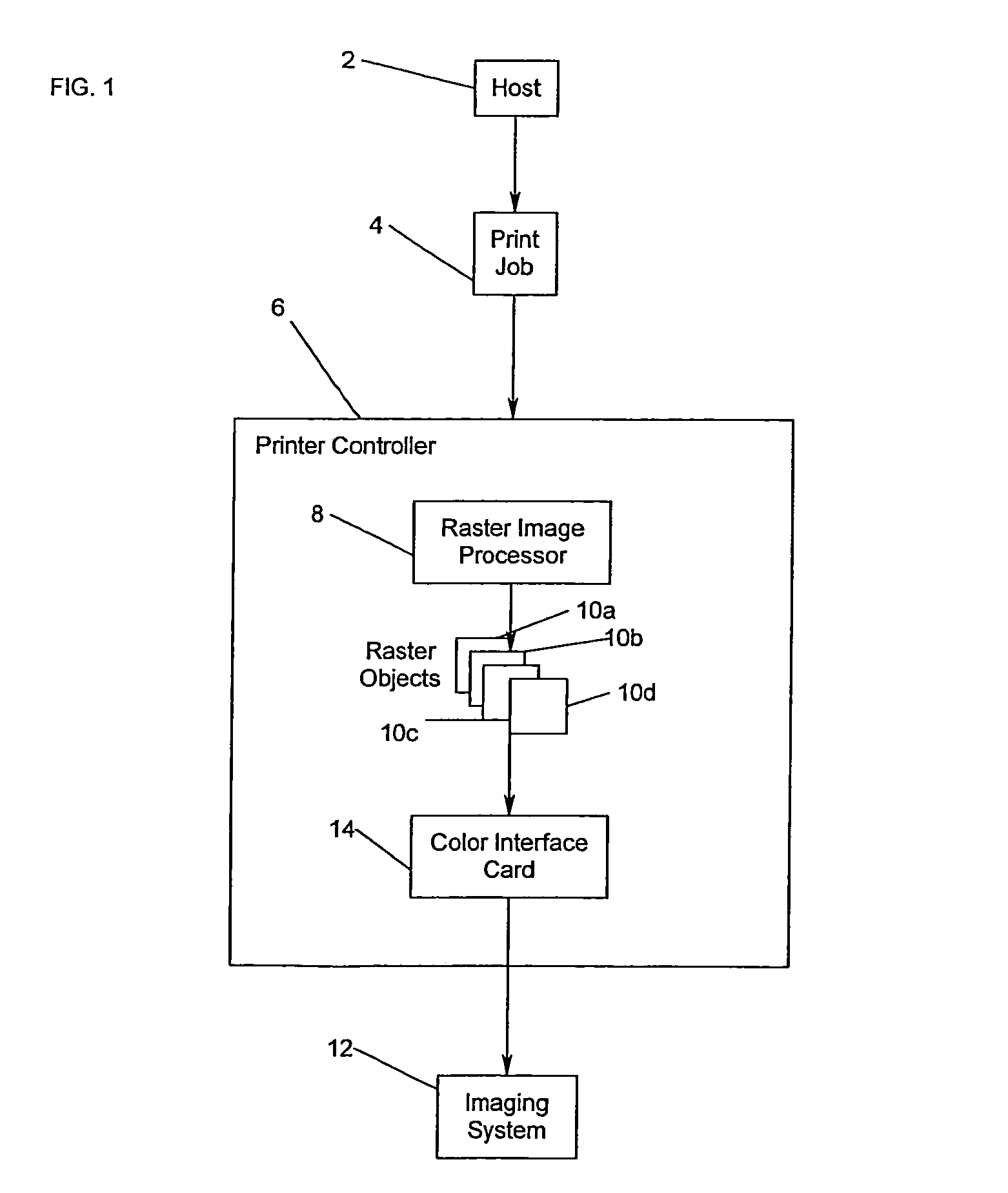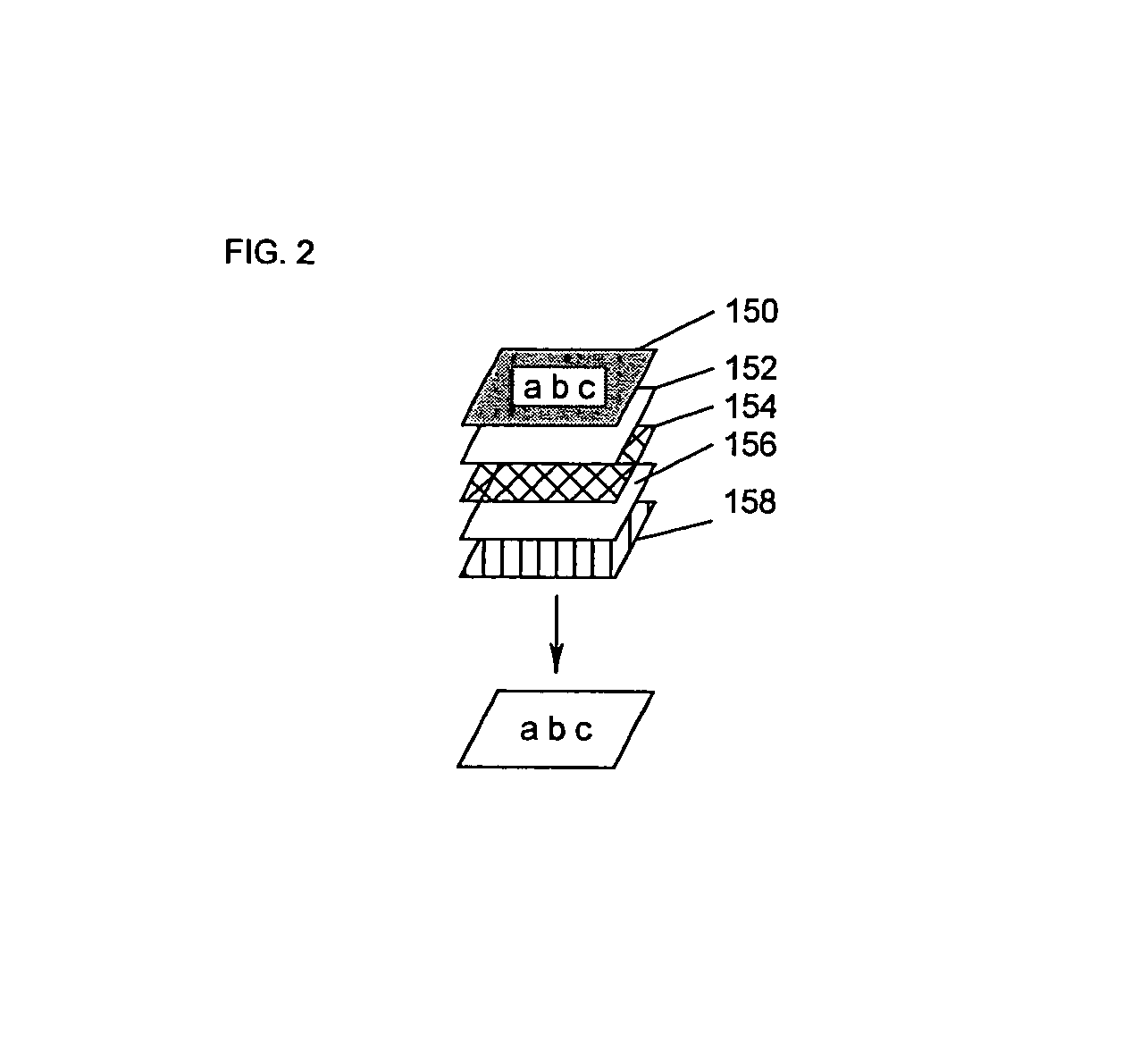System and method for optimizing color compression using transparency control bits
a transparency control and color compression technology, applied in the field of data compression schemes, can solve the problems of increasing the time required for the printer's data pipeline to transmit data, the inability to provide enough and the inability to provide byte-based compression methods with the reduction of storage space or transmit time that may be required, so as to achieve the effect of longer run length
- Summary
- Abstract
- Description
- Claims
- Application Information
AI Technical Summary
Benefits of technology
Problems solved by technology
Method used
Image
Examples
Embodiment Construction
[0034]In the following description of the illustrated embodiments, references are made to the accompanying drawings which form a part hereof, and in which is shown by way of illustration, various embodiments in which the invention may be practiced. It is to be understood that other embodiments may be utilized, and structural and functional changes may be made without departing from the scope of the present invention.
[0035]A system and methodology in accordance with the principles of the present invention provide for increased compression of color data over prior art approaches, which reduces memory access times and required bandwidth, and minimizes data transfer time between a raster image processor and a color interface card. A color compression approach consistent with the principles of the present invention provides for improved throughput when handling complex color data in microcode, which is particularly advantageous when compressing the data of merged objects.
[0036]Turning no...
PUM
 Login to View More
Login to View More Abstract
Description
Claims
Application Information
 Login to View More
Login to View More - R&D
- Intellectual Property
- Life Sciences
- Materials
- Tech Scout
- Unparalleled Data Quality
- Higher Quality Content
- 60% Fewer Hallucinations
Browse by: Latest US Patents, China's latest patents, Technical Efficacy Thesaurus, Application Domain, Technology Topic, Popular Technical Reports.
© 2025 PatSnap. All rights reserved.Legal|Privacy policy|Modern Slavery Act Transparency Statement|Sitemap|About US| Contact US: help@patsnap.com



